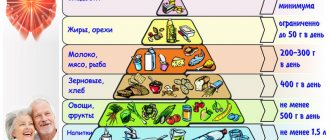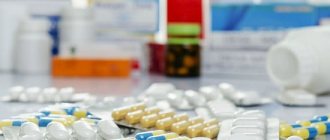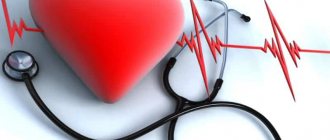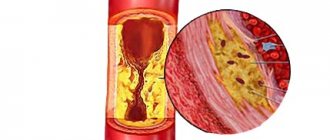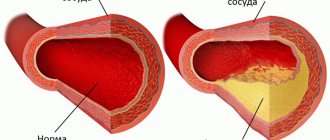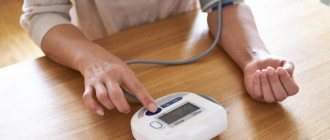Chronic and acute heart failure are pathological human conditions in which the heartbeat does not provide tissues and organs with a sufficient volume of blood. Lack or inadequate treatment of hypertension and heart disease lead to the chronic form (CHF), and AHF or acute cardiovascular failure is a life-threatening syndrome with rapidly developing characteristic symptoms that requires emergency care.
Heart failure is more common among women than men
According to statistics, AHF is the No. 1 reason for calling an ambulance in large populated areas. But, alas, even a quickly arriving highly specialized resuscitation team of cardiac care often does not have time to save a person from death.
Types of pathology
There are two forms of the disorder that have phases. Sometimes several years pass before the next stage occurs if it is a slow process.
In pathology, problems with blood release and circulation are noted.
Acute
The pathology develops rapidly, there are no development phases. Any type of development of acute heart failure is a dangerous condition for the health and life of the patient. The result of such a violation can be complete disability or death.
The pathology develops rapidly, there are no development phases.
The main reasons are:
- Violation of any myocardial functions during a heart attack. Irregular heart rhythm or inflammation of the heart tissue.
- Sudden overload of the myocardium during a hypertensive crisis, detachment of a blood clot in the pulmonary artery and a prolonged attack of asthma.
- Changes in the dynamics of the heart due to rupture of the heart septum, perforation of valves or other injuries affecting the inner layer of the heart muscle.
Providing first aid for acute heart failure must be carried out quickly.
Chronic
This type of deficiency develops in slow motion. In the initial stages of development, clinical manifestations are observed during physical activity. Complicated symptoms may appear only in a late stage. As heart failure progresses, the patient is expected to experience a significant deterioration in performance or its complete loss. The result of a chronic disorder is the incapacity of other organs.
The functioning of the vascular system is gradually disrupted, and blood pressure increases.
Gradually developing heart failure is associated with damage to the vascular system, ischemia, and high blood pressure. Factors in the development of a chronic process with insufficient heart function include various diseases, stressful situations, alcohol abuse, long-term use of a certain group of medications and pathologies of the endocrine system.
In the chronic course, sudden attacks may occur, which require first aid for acute cardiovascular failure.
Heart disease: symptoms and consequences
It must be said that any heart pathology cannot be considered in isolation from the entire cardiovascular system. And if we are talking about heart diseases , then, first of all, it is necessary to keep in mind the so-called primary pathologies, which include: heart tumors, some forms of cardiomyopathy, myocarditis, various heart lesions due to various infections, dysmetabolic diseases. In general, diseases of the heart and blood vessels can be divided into: 1. Rheumatism, myocarditis, endocarditis. 2. Heart defects (acquired), as well as chronic rheumatic heart disease. 3. Myocardial infarction, angina pectoris, coronary artery disease, cardiac aneurysm, atherosclerotic cardiosclerosis. 4. Hypertensive diseases. 5. Other heart diseases. 6. All brain lesions are of a vascular nature. 7. Various diseases of capillaries, arteries and arterioles. Heart diseases, the symptoms of which we will now consider, are, one might say, a mass disaster, especially in developed countries. However, it is worth noting that recently the situation with them has stabilized. The symptoms of various heart diseases are different and therefore we will highlight the main, so to speak common ones: - Severe shortness of breath; - Strong heartbeat; — Bad sensations and discomfort, pressure, pain in the left side of the chest, which radiates to the arm and back; - Accelerated heartbeat; — Increased sweating and nausea; - Frequent feeling of fullness in the stomach; — Rapid increase in body weight is also one of the symptoms of heart and vascular disease; - Frequent weakness and fatigue. Diseases of the heart and blood vessels must be urgently treated immediately after they are identified, otherwise it can cause quite serious consequences that even lead to death. Suffice it to say that cardiovascular diseases are in first place among all causes of death. This is sad. Even more often, patients become disabled for the rest of their days. This indicator is dominated by strokes, which in 90% occur only due to heart and vascular diseases. It is for these reasons that the prevention of heart and vascular diseases plays a dominant role in medicine. In Soviet times, this work was carried out on a grand scale and was systematic. Today, many principles of prevention are not observed, in many ways the medical base has been lost and therefore there is a difficult restoration of what was lost and therefore did not fail to affect the increase in mortality among the population. Prevention of heart and vascular diseases has always been cheaper than the treatment itself, both for an individual and for the entire state, and therefore one should not spare money on these measures; they will still pay off several times over.
Symptoms
The clinical picture of the pathology is clearly expressed and specific symptoms appear. The patient's condition gradually worsens, leading to his hospitalization.
- Shortness of breath with any exertion; in the later stages, the symptom also manifests itself in a calm state.
- Breathing becomes difficult when the patient is in a lying position. He has to change his body position. In some cases, the patient constantly sleeps in a semi-sitting position.
When lying down, breathing becomes difficult. - Cough during sleep occurs against the background of stagnant blood processes in the lung tissue. Some patients develop hemoptysis after rupture of the bronchial veins with an increase in blood volume.
- The patient's consciousness becomes confused, the outflow of urine decreases during the day, and may increase at night. The patient looks sick and lethargic. Skeletal muscles are poorly supplied with blood, which leads to chronic fatigue.
- Swelling due to stagnation of blood in the venous bed.
Swelling of the legs.
First aid for acute heart failure must be provided before symptoms become complicated.
Prevention of heart disease Transfer factor
Scientists have long found out that any disease is a consequence of a malfunction of the immune system (IS). With an optimally functioning IS, the body simply cannot get sick. What causes IS failures? Relatively recently, the fact was established that any changes in the processes occurring in the body, incl. and immune, caused by disturbances in DNA as a result of the invasion of foreign bodies into the body. Scientists have created an immunomodulator, Transfer Factor, which is based on peptide molecules - carriers of immune memory, which have the ability to eliminate DNA damage, bringing all links of this macromolecule to a normal state, thereby restoring the human immune system. That is why, to prevent diseases of the heart and blood vessels, there is no immune drug than Transfer Factor. This has been proven by clinical trials and the practice of using the drug by thousands of patients for decades. Therefore, buy the drug - you will not regret it.
First aid algorithm
An acute attack can lead to the death of the patient within an hour. Sometimes the onset of symptoms lasts up to several hours, but even in this case, emergency care for heart failure is required.
- When a patient with high blood pressure shows the first signs, you should immediately call a doctor.
- The next action is to transfer the victim to a sitting position, allowing him to rest his hands on the armrests or knees. In this position, the intercostal muscles will be better involved in the respiratory act.
It is necessary to transfer the victim to a sitting position. - Rest is required. It is necessary to give access to fresh air, but so that the patient does not move.
- To drain the blood, hot water is used, into which the lower limbs of a person are placed.
The feet are placed in a warm bath.
If possible, place a nitroglycerin tablet under the root of the tongue. The drug is not used if the patient’s blood pressure is below 110. The use of any drugs in case of impaired consciousness, loss of vision or other acute manifestations is also excluded.
Providing first aid before the arrival of doctors
Timely first aid provided to a patient with an attack of heart failure:
- is the key to preserving his life;
- will help avoid serious consequences;
- will increase the chances of a full recovery.
All actions must be performed quickly and competently, in a certain sequence.
Main stages:
- Call an ambulance team, describing in detail the clinical manifestations of the victim’s condition. This information is necessary so that doctors can arrive at the patient with specialized equipment and medications needed to perform resuscitation.
- Ensure air flow (open windows in the house or office; eliminate crowding near the victim if the attack happened on the street).
- Place the victim in a chair or on a chair or bench.
- Loosen your clothes, unfasten the buttons on your collar, unfasten your belt, and loosen your tie.
- If an attack occurs at home, you should place a heating pad, a bottle of hot water at the victim’s feet, or lower the limbs into a basin of warm water.
- Suggest taking the following medications: nitroglycerin (placed under the tongue) to dilate the coronary vessels, tincture of valerian or motherwort to calm a person who is in a state of shock.
- Constantly talk to the patient in a calm voice to relieve excessive emotional stress.
Also read: Effective pills for heart failure
Helping an unconscious adult
If an attack leads to loss of consciousness, a number of actions should be performed before the arrival of doctors, because a person’s life depends on the efficiency and correctness of resuscitation procedures.
Algorithm of actions:
- Place a person who has lost consciousness on any horizontal surface, if the attack occurred on the street, put the patient in the shade.
- Raise the victim's head with a pillow or cushion of clothing.
- Begin resuscitation: chest compressions, mouth-to-mouth artificial respiration. As soon as the pupils become wider and the skin acquires a pinkish tint, stop resuscitation.
Providing first aid to a child
There are a number of differences when providing first aid to an adult and a child. The baby should not be given medications until doctors arrive. If resuscitation procedures are required, they should be done with great caution. Children's bones are too fragile, so indirect massage must be performed with extreme care.
If an attack occurs in a little person, you need to take the following actions:
- For babies under one year of age, indirect massage is performed using the middle and index fingers, immersing them shallowly. The frequency of clicks is 120 per minute.
- For preschool children, heart massage is performed using the palm of your hand. The frequency of clicks is 100 per minute.
- For schoolchildren, resuscitation is performed using the palm of the hand. The frequency of clicks is 80 per minute.
Possible consequences
Complications arise in two forms of pathology.
Right ventricular form
Such heart failure is diagnosed less frequently than left ventricular failure, and the prognosis for it is the most unfavorable. The pathology is called “pulmonary heart”, when blood is pumped in a small circle - through the respiratory organs. The greatest risk arising in this form is pulmonary edema. If left untreated, the patient faces death.
Left ventricular form
The most common type of heart failure is called “cardiac asthma.” In most cases, it has a delayed type of development. Serious deterioration in health is observed with significant enlargement of the heart. Blood accumulates in the left atrium and effusion forms. Its contents enter the alveoli or lung tissue.
Treatment
Unfortunately, patients with this pathology have a high mortality rate even if they go to the hospital in a timely manner. About 15% of patients do not live even a year if the pathology is stage 1 or 2. Timely first aid for heart failure plays an important role in treatment.
The patient undergoes treatment in a cardiology department or center.
Conservative treatment for deficiency consists of prescribing medications, a course of which the patient undergoes in a cardiology department or center. The dynamics improve with the use of diuretics. Beta blockers help lower blood pressure and improve the quality of heart rhythm. After their administration, the amount of blood pumped is significantly reduced, which reduces the load on the myocardium.
Glycosides help improve heart function.
Glycosides have a herbal composition that helps improve the functionality of the myocardium in case of its insufficiency. The work of the heart becomes economical and productive. In large quantities, glycosides are dangerous.
The patient is placed on bed rest; even minor loads and stress are contraindicated. A mandatory item is following a special protein diet and limiting salt.
Additional treatment includes withdrawal from alcohol dependence. A patient with psychosis or other nervous disorders is prescribed a course of sedatives. Anemia is prevented with iron supplements.


